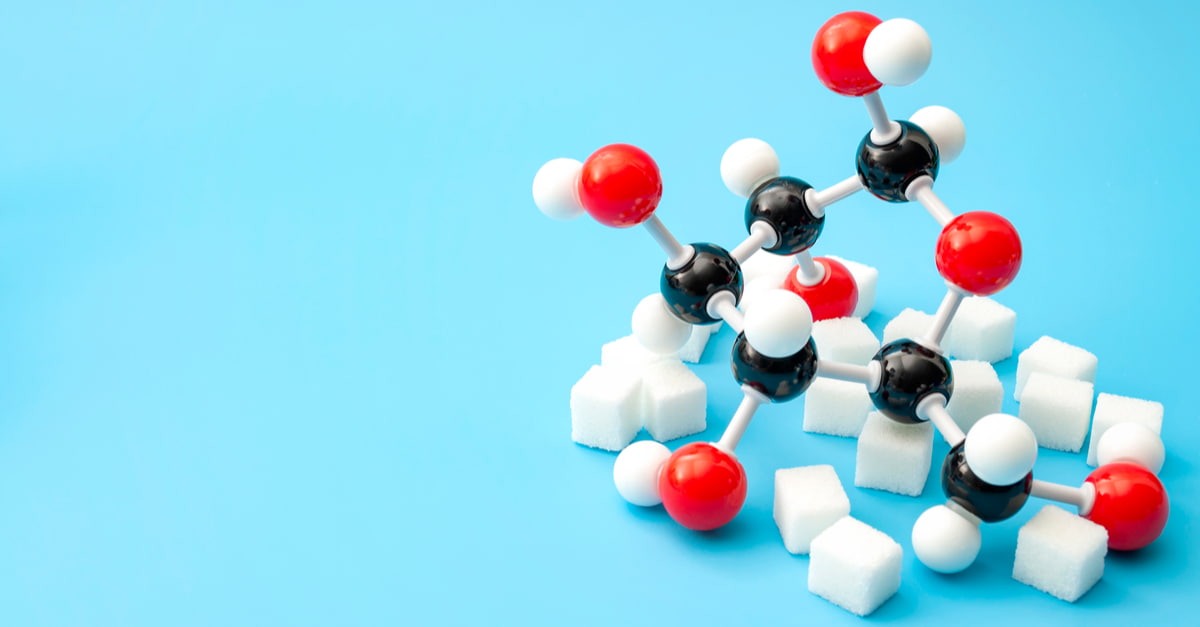Glucozo là gì? Công thức, cấu tạo, tính chất và vai trò của glucozo

Glucozo exists in most human, plant and animal parts. So what is glucose? Let’s find out the formula, structure, nature and role of this important substance.
- Cách lấy lại gốc tiếng Anh lớp 9 nhanh chóng, hiệu quả
- Cách chia động từ Bear trong tiếng anh
- Hướng dẫn học và giải bài tập tiếng Việt: Người liên lạc nhỏ lớp 3
- 10 Phương pháp dạy toán cho bé 5 tuổi bố mẹ muốn con học giỏi nên tham khảo ngay
- Chứng chỉ Starters tiếng Anh là gì? Quy trình & kinh nghiệm thi hiệu quả
What is the definition of glucozo?
Glucozo (also known as Dextrose) is the most common type of monosaccaride with a molecular formula C6H12O6. Glucozo is mainly created by plants and most of the algae during photosynthesis from water and CO2, using energy from sunlight. There, it is used to create cellulose in cell walls and starch.
Bạn đang xem: Glucozo là gì? Công thức, cấu tạo, tính chất và vai trò của glucozo
In energy metabolism, glucozo is the most important source of raw materials in all organisms to generate energy during cell respiration. It is stored mainly in the form of cellulose and starch, and in animals it is stored in glycogen. (Source: Wikipedia)
-
The molecular formula of glucose is: C6H12O6
-
Molecular mass: 180
-
Structure characteristics: The molecular structure of glucose is determined based on the results of the following experiments:
-
Glucozo participates in silver -coated reactions and oxidized by bromine water to form gluconic acid. From there, Glucozo has a CH = O group in the molecule.
-
Glucose acts with Cu (OH) 2 that produces blue solution, which proves that glucose molecules have many OH groups in the adjacent position.
-
Glucose produces esters containing 5 CH3COO acid roots. Thus, in the structure of glucose there are 5 OH groups.
-
When completely eliminated glucose, the hexane is obtained => 6 C forming a non -branched circuit.
From the above experiments, we conclude: Glucozo is a molecular compound, in the form of molecular open circuit with the structure of a single -function aldehyde and 5 -function alcohol with the formula: CH2OH – Choh – Choh – Choh – Choh – Choh – CH = O
.jpg)
Write neatly: CH2OH (CHOH) 4CHO
In which people number carbon number starting from the group ch = o.
In fact, glucose exists mainly in two types of ring circuits: α – glucose and β – glucose.
Natural state and physical properties Glucozo
In nature, where does Glucozo appear? Let’s find out the natural state and physical properties of this substance.
.jpg)
Glucozo exists in many natural fruits, especially ripe grapes. (Photo: Internet collection)
The natural state of glucose
-
Glucose appears in most plants, especially ripe fruits. In particular, glucose is found in ripe grapes, so it also has another name as a grape sugar.
-
Glucose accounts for 30% of the composition of honey.
-
Humans and animals also contain glucose in the body.
Physical properties
Glucose is a colorless crystalline, which is easily soluble in water, has a sweetness but is lighter than sugarcane sugar.
Chemical properties of glucozo
It is proved that glucozo is typical of multi -function alcohol and aldehydes through the experiments below.

Properties of multi -function alcohol
In the solution, at normal temperature glucose dissolved Cu (OH) 2 for the blue-glucozo complex solution:
2C6H12O6 + Cu (OH) 2 → (C6H11O6) 2CU + 2H2O
C6H7O (OH) 5 + 5 (CH3CO) 2O → C6H7O (OOCCH3) 5 + 5CH3COOH
=> The reaction proves that glucozo contains 5 -Oh roots
The properties of aldehydes
Glucozo participates in silver -coated reactions, reducing reactions, fermenting wine …
Glucozo oxidation reaction
AgNO3 solution is capable of oxidizing glucozo in NH3 environment. The product formed is ammonium gluconate and silver. We observe them will cling to the wall tube wall.

Equation:
CH2OH[CHOH]4CHO + 2AgNO3 + 3NH3 + H2O (Đk: to) → CH2OH[CHOH]4COONH4 + 2Ag + 2NH4NO3
Glucose is oxidized by Cu (OH) 2 in an alkaline environment. The reaction result will form sodium gluconate, copper (I) oxide and H2O.
Equation:
CH2OH[CHOH]4CHO + 2CU (OH) 2 + NaOH (ĐK: Temperature) → CH2OH[CHOH]4COONa + Cu2O ↓ (red brick) + 3H2O
Equation:
CH2OH[CHOH]4CHO + Br2 + 2H2O → CH2OH[CHOH]4COOH + 2HBr
Xem thêm : Công thức tính chu vi hình bình hành chính xác nhất
When conducting hydrogen gas into the heated glucose solution, there is an additional Ni catalyst, we will obtain a poliancol also known as Sobitol.
Equation:
CH2OH[CHOH]4CHO + H2 (ĐK: To, Ni) → CH2OH[CHOH]4CH2OH
Wine fermentation reaction
When a catalytic enzyme, glucose will be fermented, creating a product created as ethyl alcohol and carbon dioxide.
Equation:
C6H12O6 (ĐK: enzyme, 30-35 degrees C) → 2C2H5OH + 2CO2 ↑
See also:
How to prepare glucozo
In industry and in nature, different glucozo modulation methods. Therefore, the quality and price are two factors that we need to consider during use.

-
In industry: glucose is prepared by hydrolyzing starch by enzyme catalyst or dilute chlohydric acid (HCl). In addition, cellulose hydrolysis is also hydrolyzed (found in cells, sawdust) thanks to the concentrated chlohidric acid catalyst into glucose as an ethanol production material.
Glucozo preparation equation:
(C6H10O5) N + NH2O (Temperature, H +) → NC6H12O6
6CO2 + 12H20 (Sunlight) → C6H12O6 + 6O2 + 6H20
The role and application of glucose in life and production
Glucozo was first isolated from raisins in 1747 by German chemist Andreas Marggraf. Glucozo was discovered in grapes by Johann Tobias Lowitz in 1792 and was recognized as different from sugarcane (Saccarozo) (according to Wikipedia). Since then, glucose has been especially important in industry and in medicine.

The role of glucose in industry
-
Glucose is used to produce ethyl alcohol from starchy or cellulose.
-
In the food industry, glucozo is used as a preservative.
-
Glucozo helps the mixture with sugar not “restor” – the phenomenon of emerging small sugar particles when left for a long time. At the same time, Glu also helps the confectionery for a long time to dry and keep the softness.
-
Glucozo is also used in the process of making cream to keep the water mixture and smooth sugar.
-
Glucozo is used to rinse mirrors and coated intestinal plugs.
The role of glucose in medicine
-
Glucose contains basic nutrients that help create energy for the body to work better, so it is used as an enhancement drug for children, the elderly and body weakness.
-
Glucose is used for serum mixing (applied in medical infusion).
-
Glucose is used to produce vitamin C.
Glucose role with people
-
Glucozo is the main and direct source of energy of the body, stored in the liver in the form of glycogen.
-
As a part of the cell structure (RNA and DNA) and some other special substances (such as mucopolysaccharid, heparin, hyaluronic acid, chondroitin …).
-
Create energy needed for life – The process takes place in cells. The use of cell glucozo depends on the activity of the cell membrane under the effect of insuline (except for brain cells, nervous organizations, blood cells, kidney marrow and lens).
Carbon of glucose – Fructose
After learning about glucose, let’s find out about fructose – isomers of glucozo. In the general formula CX (H2O) Y, both of these compounds have x = 6, y = 6 and are monosaccarides, but what are they different in?

Molecular formula: C6H12O6.
Fructose will have the following open -circuit structural formula as follows:
CH2OH – Choh – Choh – Choh – Co – CH2OH
In solution, fructose exists mainly in the form of β, ring 5 or 6 sides.
.jpg)
Unlike Glucozo, the characteristic physical properties of fructozo are:
-
Fructozo is a colorless crystal, easily soluble in water, sweeter than sugarcane sugar.
-
They exist a lot in sweet fruits and account for 40% of the ingredients of honey.
-
Fructozo has a sweetness of sugarcane and 2.5 times more than glucozo.
The chemical properties of fructose:
Fructose molecules include 5 groups OH. There are 4 adjacent groups and 1 functional group C = O should have the chemical properties of multi -function and ketone alcohol. Fructose has the same properties as glucose.
-
Xem thêm : Tiếng việt lớp 4 từ láy là gì? Bí quyết giúp bé chinh phục mọi bài tập về từ láy dễ dàng
Fructose dissolves Cu (OH) 2 at normal temperature.
-
Effects with acid anhydrit to create 5 -function esters.
-
Properties of ketones: Effect with H2 to create Sobitol and participate in the plus reaction of HCN
-
In neutral or acidic environments, fructose does not show the reducing properties of aldehydes, but in alkaline environment, fructose has this property due to the metabolism between glucose and fructose through intermediaries as an enolor.

Note: In the alkaline environment, the fructose converts into glucose, so the fructose has a mirror -coated reaction, reacting with Cu (OH) 2 in an alkaline environment. But fructose has no reaction to discolor bromine solution. This is a sign to identify Fructozo and Glucozo.
Exercise on Glucozo SGK Chemistry 9 with solutions
From the knowledge of Glucozo above, you apply that knowledge to solve some basic exercises in the following 9th chemistry textbook.

Lesson 1 page 152 SGK Chemistry 9
Name some ripe fruits containing glucose.
Suggestions for the answer:
Glucose is found in some ripe fruits such as ripe grapes, ripe bananas, ripe guava, ripe jackfruit, nine nine (custard), pineapple ripe (aromatic).
Lesson 2 chemistry 9 textbook page 152
Choose a reagent to distinguish the following solutions by chemical methods. (Specify how to proceed).
a) Glucose solution and ethyl alcohol solution.
b) Glucose solution and acetic acid solution.
Suggestions for the answer:
a) Excerpt from the test sample and numbering:
Select the reagent that is AgNO3 in NH3 solution (heated): Put a few drops of AgNO3 in NH3 solution in turn into two test tubes and put the test tube in the hot water cup respectively:
Which substance participating in the reaction to create a silver -colored product clinging to the test tube is glucozo
PTHH: C6H12O6 + Ag2O -> C6H12O7 + 2Ag (Catalyst: NH3)
The remaining substance does not work as ethyl alcohol.
b) Excerpt from test sample and numbering:
Select the reagent Na2CO3: Put a few drops of Na2CO3 solution in turn into 2 test tubes
Which test tube has the reaction for the air to fly is CH3COOH
PTHH: 2CH3COOH + Na2CO3 → 2CH3COONa + H2O + CO2
The remaining substance does not react as glucose
(It is possible to use a reagent that is purple anemone, the color that converts the color to make the purple anemone into red is CH3COOH, the other does not convert the purple anemone color as glucose).
Lesson 3 textbook chemistry 9 page 152
Calculate the mass of glucose to get to mix 500ml of 5% glucose solution with d = 1.0 g/cm3.
Suggestions for the answer:
Mdd glucose = 500. 1 = 500 (g)
mglucose = (500.5) / 100 = 25 (g)
Lesson 4 page 152 SGK Chemistry 9
When glucose fermentation, it is found to release 11.2 liters of CO2 with standard conditions.
a) Calculate the volume of ethyl alcohol produced after fermentation.
b) Calculate the volume of glucose taken at first, knowing the fermentation efficiency is 90%.
Suggestions for the answer:
a) Volume of ethyl alcohol:
n (CO2) = 11.2 / 22.4 = 0.5 mol
Glucose fermentation equation:
C6H12O6 → 2C2H5OH + 2CO2.
According to the equation: n (ethyl alcohol) = nCO2 = 0.5 mol.
m (ethyl alcohol) = 0.5 × 46 = 23g.
b) The mass of glucose.
According to the glucozo equation = 1/2. nCO2 = 1/2. 0.5 = 0.25 mol
Because the efficiency reaches 90%, the amount of glucozo needed is:
0.25 x 180 x 100/90 = 50g
The above article has provided sufficient information about the formula, structure, nature, and the role of Glucozo – a substance used extremely popular around us. Share articles and visit Nguyễn Tất Thành website to gain more useful knowledge about other subjects such as Math, Physics, Chemistry of classes!
Nguồn: https://truongnguyentatthanh.edu.vn
Danh mục: Giáo dục





